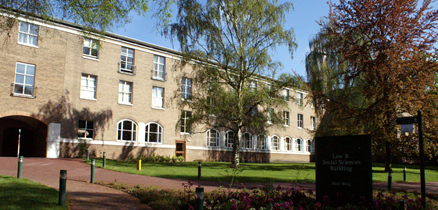
July 23, 2013, by Lucy
Science in Public conference, University of Nottingham
Yesterday I contributed to a session on ‘Social Media, Public Engagement and the History of Science, Technology and Medicine’ as part of the Science in Public 2013 conference (#SiP13) at the University of Nottingham, and the Manchester based International Congress for the History of Science, Technology and Medicine (#ichstm). I was one of three speakers at the Nottingham end using social media to link up with speakers and audience members in Manchester and in the United States.
My five minutes included an introduction to ‘Snow Scenes’, before a brief review of weather and social media, and some information about the National Snow Survey of Great Britain – what could be described as an early crowd-sourcing project. Launched in 1937, the survey used a postcard system to collect observations of snowfall and snow cover in upland Britain (a post on the Snow Survey will follow next week).
Following its general popularity as a conversation topic, certainly in Britain, weather appears to be a hot topic on social media. As Gordon Manley, a climatologist and geographer, whose work on snow frames our project, declared in 1952, “If a census were taken of common topics of conversation amongst British people, it is very probable that the weather would take first place” (Manley, 1952:13). In 2009, twitter declared that people send more than 200 tweets per minute about the weather. Weather’s online presence also speaks to recent harsh winters, our present heatwave, the role of the amateur observer in the development of meteorology as a science, in the creation of the historic weather record, and the continuing prominence of the amateur in weather and climate monitoring. In the last decade automated weather stations have become commonplace in amateur observers’ gardens, linked up to a laptop, they offer easy data sharing. Websites like Weather Underground and the Weather Observations Website or WOW act as hubs for the sharing of this data that (problems relating to reliability and standardisation considered) has great potential to be of use for wider communities. Social media tools act as a facility by which these measurements and other more basic observations increase the spatial resolution of the UK’s observing network. An example of the latter is #UKSnow which, since 2009 has been keeping track of the snowfall in the UK. The interactive map uses geotagged or postcode labelled tweets (often with accompanying photos) to draw an up to the minute picture of current snowfall, adding a personal touch to forecasts now typically reliant on unmanned stations. Social media can also play an integral part in the dissemination of information about severe weather events, and as a more general tool to prompt conversation with the public on all matters weather related, making meteorological science public.
Other speakers and audience members raised some interesting points about using social media but I think we all generated far more questions than answers! Why blog? (for the social interactions, finding an audience, getting something out of the process of writing, being experimental…) Does the use of social media lead to greater clarity? Is there a degree of risk involved? Can blogging blur the lines between groups we interact with, and break down traditional barriers between expert and amateur? Are blog posts a way of bringing a sense of history to the attention of scientists? Are they a way of fulfilling our obligation to engage with the public? And should academics get credit/acknowledgement for their blog writing?
Thank you to Warren and Rebecca for their invitation to take part in the session.
To finish a few more questions that I’ve been pondering:
Are you aware of any social media based explorations of the weather?
Do you regularly use social media to talk about weather and climate? Or to gather meteorological observations?
How might memory and history mix with social media ventures into the weather?
Does online sharing and discussion help to improve the reliability of weather memories, particularly the ability to date them?
And through digitally reconstructing the events of past winters will we be better prepared for future winters?
No comments yet, fill out a comment to be the first

Leave a Reply